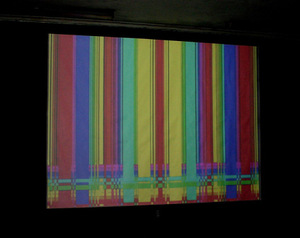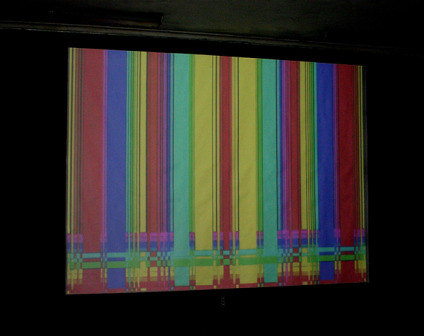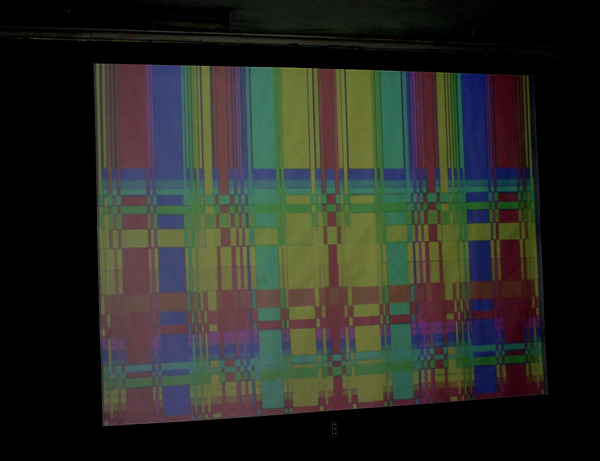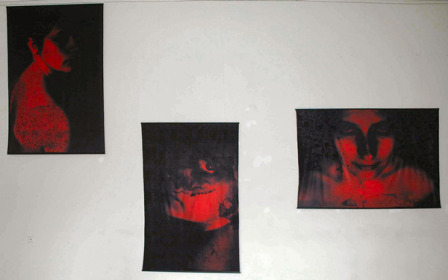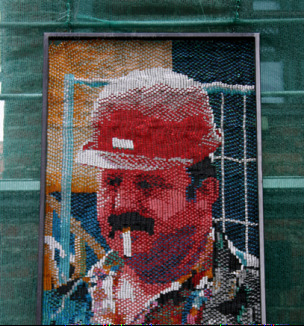NEW NAMES IN PANORAMA OF TEXTILE ART 0
(Impression) Jolanta Zabulytė
www.kamane.lt, 2008 06 15
Domantė Šarakauskaitė "Justilė"
Vytautė Čeponytė "Rem Phase"
Rūta Naujalytė "Contractor Rapolas"
Agnė Vasiukevičiūtė "Teddy Bear Tadas"
In brief: At the end of May the defence of Master works, which took place at Kaunas Art Faculty of Vilnius Academy of Arts, interested more people than only students and their relatives. Works of young textile creators proved once again that the Department of Textiles of Kaunas Art Faculty was famous for novelties and creativity.
Four Master students of textile presented their works for public evaluation - the young artists should be memorised by exhibition visitors eager to see high-quality art works.
Vytautė Čeponytė presented a work of three parts by a mysterious name “REM Phase” (lecturer Loreta Švaikauskienė). According to the author of the work, REM or “rapid eye movement” emphasises the stage of sleep and dreaming. Therefore, three flashes of subconsciousness, three exposures of the internal world of a dreaming woman are seen in the work.
The self-portrait genre chosen by the artist shows her inclination to self-analysis through the secret of a dream. The tension of secret prevails in all three parts of V.Čeponytė’s work – from conditional peace in the first part to aggressiveness in the third, which serves as the climax of the theme.
Rūta Naujalytė embroidered the builder’s portrait by colourful beads in the work “Contractor Rapolas” (lecturer Danutė Valentaitė). The first impression is as if the spectator heard the echo of the social realism – it is an accurate academic drawing. On the other hand, the plastic beads represent ironic contrasts: the hard physical work of a builder and the work of a woman embroidering in the cosy home environment is compared.
Agnė Vasiukevičiūtė tailored a giant toy from fabric patterns “Teddy Bear Tadas” (lecturer D.Valentaitė). The big, passive and sad teddy bear looks rather uncannily. The author's intent was to approximate an animal from a zoo to children by compensating the fear for a wild animal by cosiness and warmth typical of a toy. Perhaps the choice of technique was not motivated enough as it destroyed monumentality and softness of a toy.
Meanwhile, Domantė Šarakauskaitė presented an extremely original interdisciplinary work “Justilė” (lecturer Laima Oržekauskienė), the name of which illustrates the connection of senses, feelings and textile in one work. The birth of a bedspread with folk motives on the screen makes the eyes, taste and hearing of a spectator function.
Using the possibilities of a computer and other people participating in the project, the author weaves in colours, sounds and lines: corresponding smells (yellow – honey, orange – orange fruit, violet – lavender, etc.) accompany every colour of a virtual thread, authentic sounds of weaving and singing are heard, the role of lines is performed by rhythm, with the change of which the view becomes more intensive or calms down.
Moreover, the spectator may influence the process of weaving himself/herself while observing the work of D.Šarakauskaitė: the view and sound hushes down when he/she comes closer to the screen and becomes louder and brighter when going away from it. The work is untouchable, it may only be observed.
The graduation works of Master students striving for individual thinking and artistic originality let one hope that the graduates of the Textile Department will go along paths of creative searches and artistic discoveries in future. The beginning grants hope for this.
